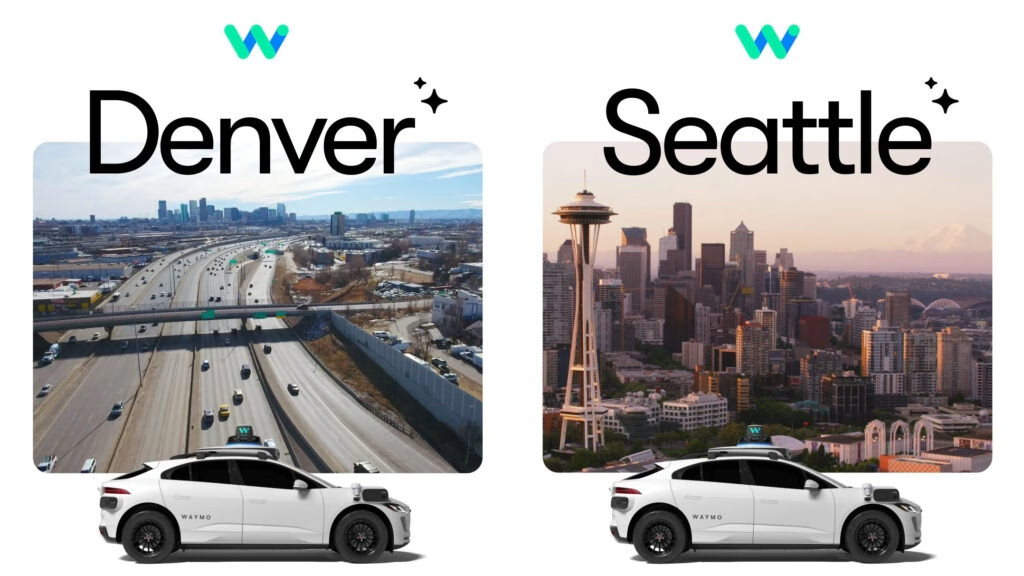How is Waymo Expanding Its Autonomous Fleet to Denver and Seattle?
Waymo is making waves again, this time by rolling out its self-driving fleet for testing in Denver and Seattle. If you’re in either city, don’t be surprised to spot a Jaguar I-PACE SUV or a Zeekr RT with a Waymo logo cruising by—though, for now, there’s still a human behind the wheel. This isn’t just a PR stunt. It’s a calculated move to gather real-world data on local traffic quirks, unpredictable weather, and those one-of-a-kind city layouts that can trip up even the smartest AI.
Why Start with Human-Driven Testing Instead of Going Fully Driverless?
You might wonder: if Waymo’s tech is so advanced, why not go all-in with driverless rides from day one? The answer is simple—safety and adaptation. Each city has its own flavor of chaos. Denver’s sudden snow squalls, Seattle’s relentless rain, and the unique driving habits of locals all present fresh challenges. By starting with human drivers, Waymo’s systems can learn the ropes without risking public safety. It’s a bit like teaching a new chef the kitchen before letting them cook solo.
What Vehicles and Technology Is Waymo Using in These Cities?
Waymo isn’t sending just any car out on the road. In Denver, you’ll see a mix of Jaguar I-PACE SUVs running the fifth-generation Waymo Driver and Zeekr RTs equipped with the latest sixth-gen system. These vehicles are packed with sensors, cameras, and AI smarts. The fifth-gen system has already proven itself in Phoenix and San Francisco, while the sixth-gen is designed to handle even more complex scenarios—think tricky merges, unpredictable pedestrians, and those infamous Seattle roundabouts.
How Are Local Leaders and Residents Responding to Waymo’s Arrival?
The buzz from city and state officials is mostly positive. Colorado’s Governor Jared Polis is all-in, touting the promise of safer, faster, and greener transportation. Denver’s Mayor Mike Johnston is already looking forward to his first ride, highlighting the climate-friendly benefits. This kind of public support isn’t just window dressing. It’s crucial for building trust and smoothing the regulatory path—something Waymo has learned the hard way in other cities.
What’s the Bigger Picture for Waymo’s Expansion?
Denver and Seattle aren’t just test beds—they’re stepping stones in a much broader strategy. Waymo already runs fully autonomous rides in Phoenix, Los Angeles, Austin, and Atlanta, with plans to launch in Miami, Washington, D.C., and New York City. Just recently, San José’s airport gave Waymo the green light to operate on airport grounds—a big deal, considering airports are notoriously complex environments for autonomous vehicles.
How Does Waymo Stack Up Against Competitors Like Tesla?
Tesla gets plenty of headlines for its Robotaxi ambitions, especially in Austin. But here’s the kicker: Waymo is quietly outpacing the competition in terms of real-world, driverless deployments. According to a 2023 report from the National Highway Traffic Safety Administration, Waymo vehicles have logged millions of autonomous miles with a strong safety record. While Tesla’s approach leans heavily on consumer vehicles and over-the-air updates, Waymo’s strategy is more methodical—city by city, with deep collaboration with local governments.
What Challenges Does Waymo Face in New Markets?
No sugarcoating it—urban expansion isn’t easy. Seattle’s hilly terrain and unpredictable weather, Denver’s high-altitude conditions, and the patchwork of local regulations all pose hurdles. Waymo’s phased approach, starting with human-driven data collection, is designed to iron out these wrinkles. The company also works closely with city planners and transportation officials to ensure its service complements existing transit options rather than competing with them.
What Can Riders Expect When Waymo Goes Fully Driverless?
Once the testing phase wraps up and the data is crunched, Waymo plans to gradually remove the human safety drivers. Riders can expect a seamless, app-based experience—summon a car, hop in, and let the AI handle the rest. Based on feedback from Phoenix and San Francisco, most people find the rides surprisingly smooth and, in some cases, less stressful than a traditional taxi. There’s even a bit of novelty—imagine telling your friends you took a driverless car to the airport.
The big takeaway? Waymo’s expansion isn’t about perfection—it’s about smarter adjustments. Start with one change this week, and you’ll likely spot the difference by month’s end.

